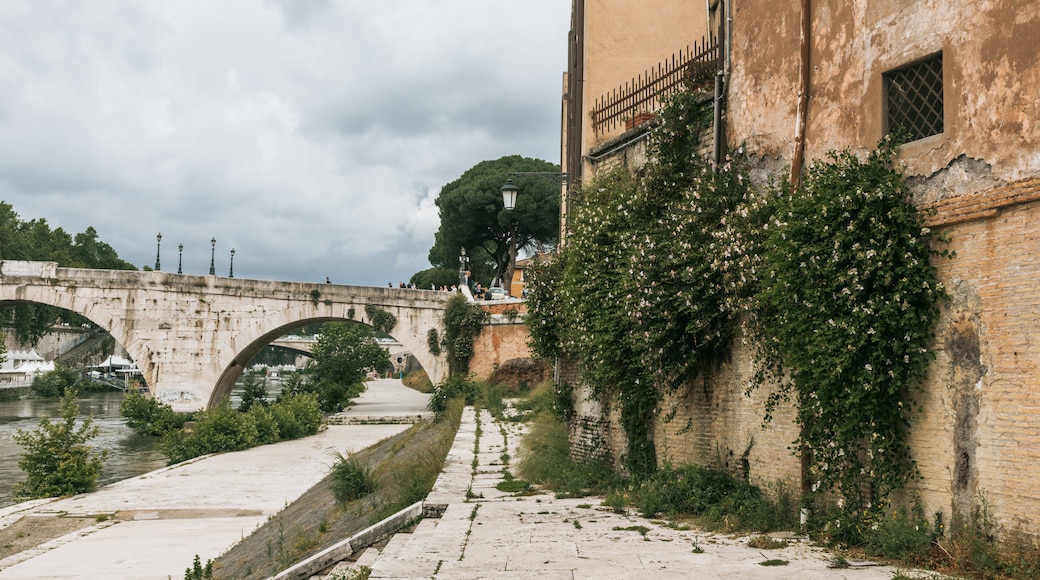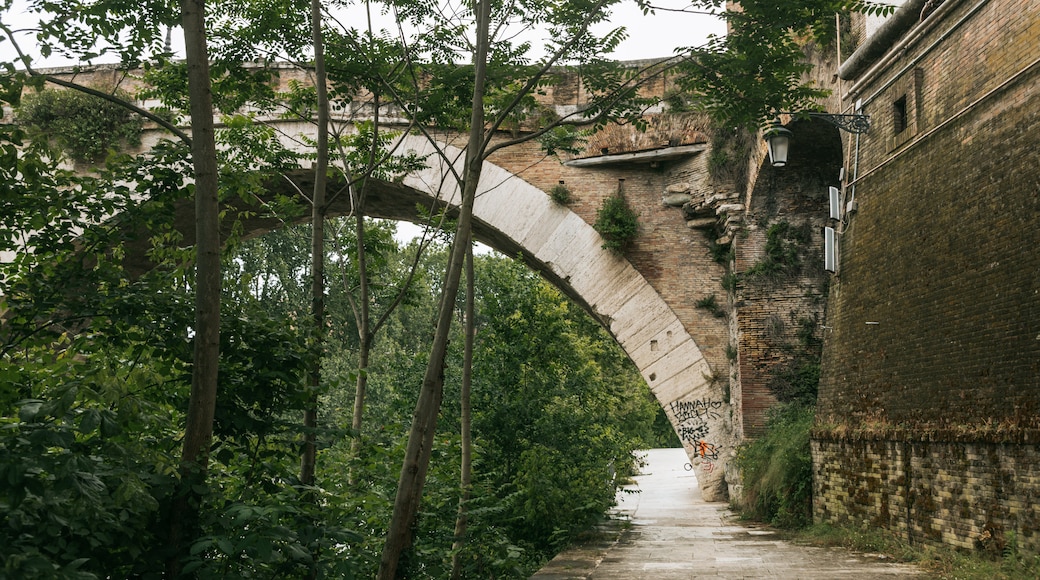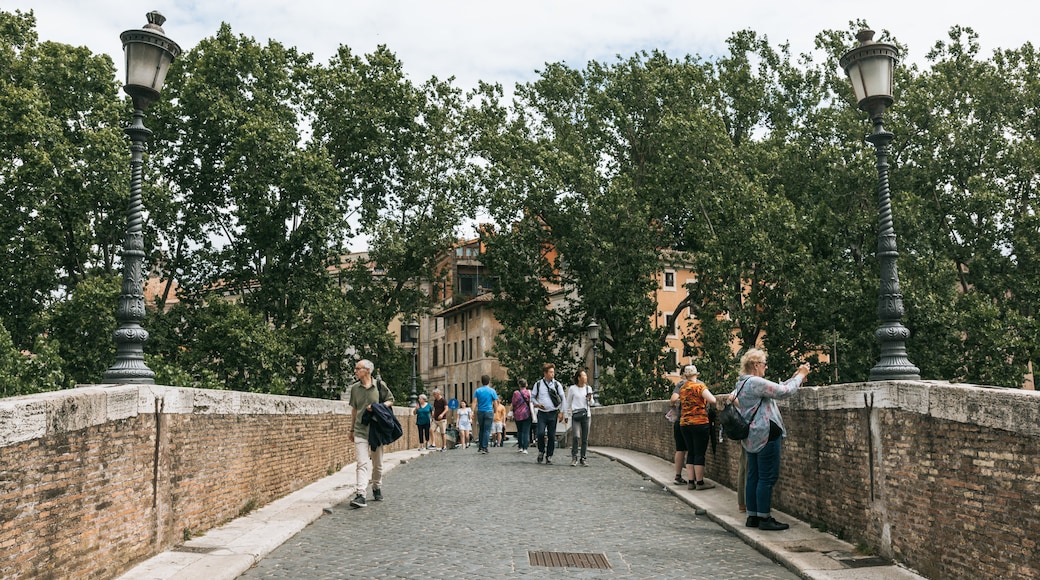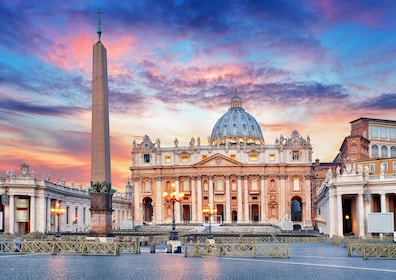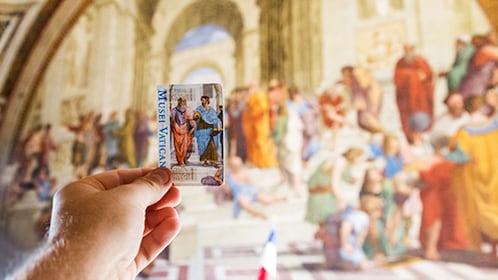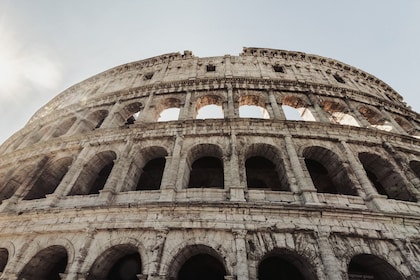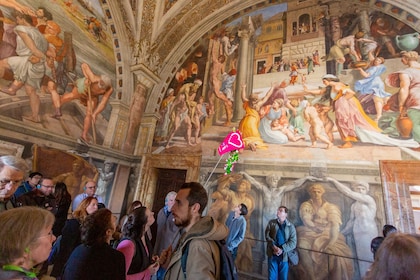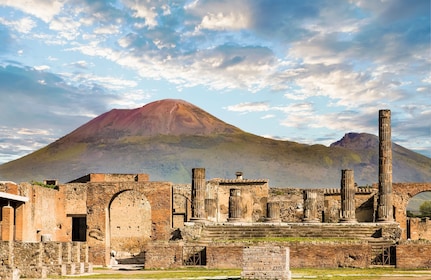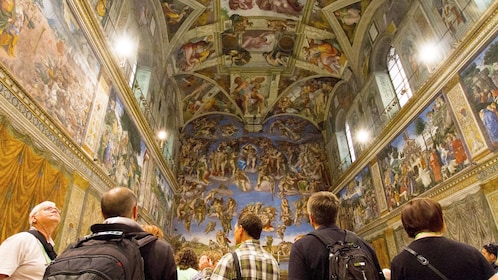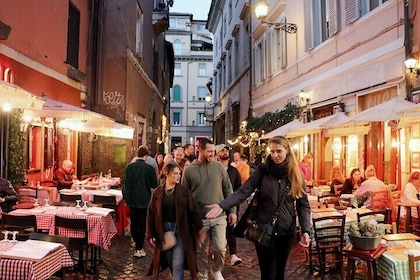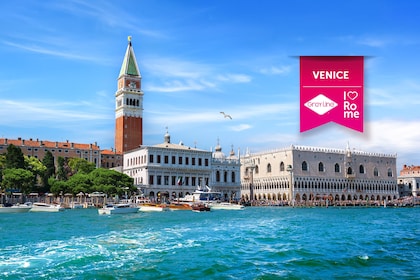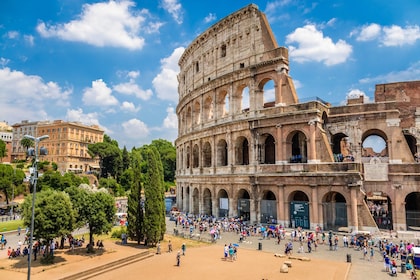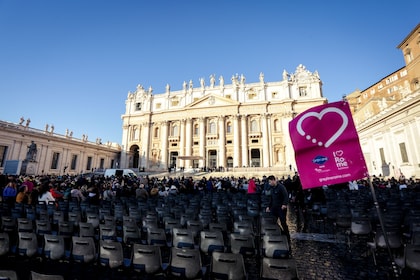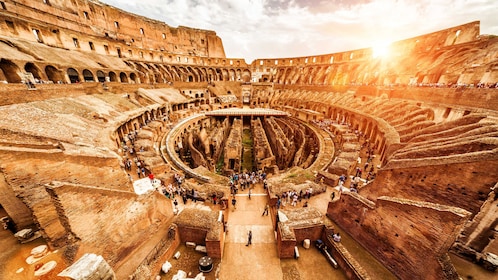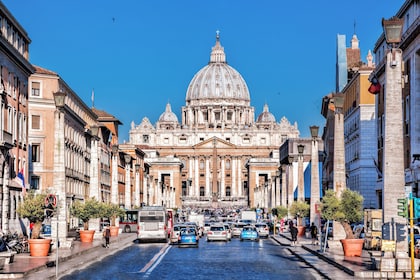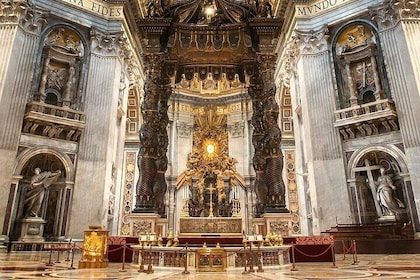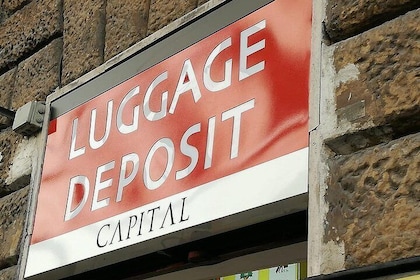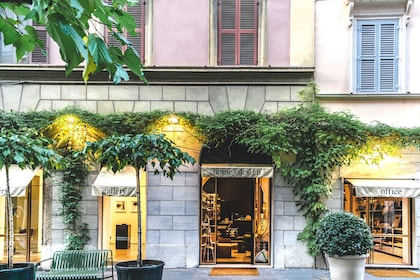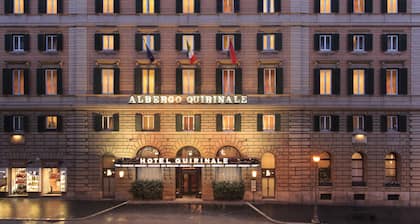Despite its tiny size, Tiber Island manages to cram in lots of interesting historic sights.
Study the striking cream exterior of its small church and examine the columns from an ancient temple. Go for a stroll along the banks of the gently flowing river and check out the dilapidated remains of the first stone bridge to be built in the city.
At just 885 feet (270 meters) long and 219 feet (67 meters) wide, it doesn’t take long to wander from one end of boat-shaped Tiber Island to the other. Fortunately, there is plenty to see along the way. Look for the 10th-century Chiesa di San Bartolomeo on the east side of the island. Built on the site of a 3rd-century temple, the church features a predominantly Baroque façade as well as a Romanesque bell tower that was added years after the initial construction. Step inside to see its frescoed ceiling and small fountain, which is decorated with statues of Jesus, Bartholomew, Adalbert and Otto III. The 28 columns that separate the naves are relics from the original temple.
Make your way north from the church to the Ponte Fabricio. Built in 62 B.C., this is one of two working bridges that connect the island with the city. Note the detailing on the parapets, which are decorated with two pillars holding a figure of a four-faced Janus, the god of the beginning and end.
Nearby the Ponte Fabricio lies the only standing arch of the Ponte Rotto (Broken Bridge). Constructed in 142 B.C., this structure was destroyed by a flood in 1598 when the water rose to 65 feet (20 meters) above sea level. Admire the relief of a dragon that stands on the bridge. This is a symbol of Pope Gregory XIII and was added after another flood damaged the bridge.
To get to Tiber Island, take the bus from central Rome to Lungotevere dei Pierleoni. It’s just a short walk to the island from there.

